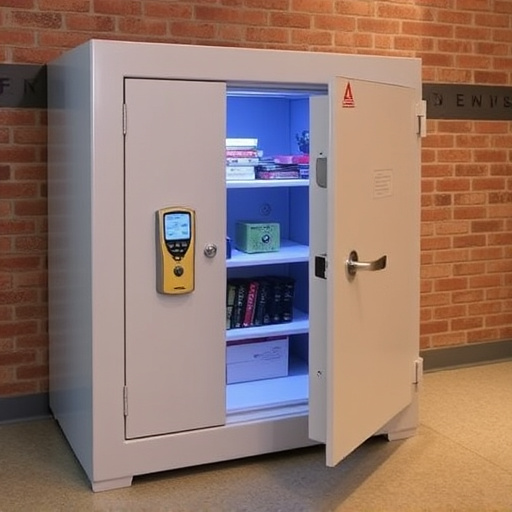In today's digital age, consumers need to be aware of "fake household items for storage" that are designed with hidden compartments for illicit purposes. These items go beyond counterfeits, using advanced techniques to hide secret spaces for dangerous or illegal substances. Staying vigilant and reporting suspicious products helps maintain market integrity and public safety. While these items offer creative storage solutions, it's crucial to ensure they're made of non-toxic materials, securely fastened, and placed discreetly for optimal safety.
Uncover the surprising world of hidden compartments within everyday consumer products! In our modern, tech-driven society, creative designers have integrated secret storage spaces into seemingly ordinary items. This article explores how fake household items can serve as ingenious solutions for secure storage. From cleverly concealed compartments in books to disguised safes in kitchenware, we delve into the art of hiding valuables while also discussing safety measures to ensure these fake products remain just that—discreet and secure.
- Understanding Fake Household Items: Unveiling Concealed Compartments
- Creative Uses for Hidden Storage Spaces in Everyday Products
- Ensuring Safety and Security: Best Practices for Using Fake Consumer Products
Understanding Fake Household Items: Unveiling Concealed Compartments
In today’s digital age, consumers are increasingly aware of the prevalence of fake products in the market. Among these fakes are household items designed to look authentic but secretly harboring concealed compartments for illicit purposes. These “fake household items for storage” go beyond mere counterfeits; they are often crafted with sophisticated techniques to hide secret spaces, making them potentially dangerous and illegal. Understanding this tactic helps consumers stay vigilant against such deceptions.
Unveiling these hidden mechanisms requires a critical eye for detail. For instance, suspicious items might have unusually seamless joints or peculiar weight distribution, indicating a secret space within. Once identified, it’s crucial to report such findings to the relevant authorities. By doing so, consumers not only protect themselves but also contribute to maintaining the integrity of consumer markets and ensuring public safety from potentially harmful or illegal substances stored in these concealed compartments.
Creative Uses for Hidden Storage Spaces in Everyday Products
In today’s world, where space is often at a premium, creative solutions are in high demand. Hidden storage spaces within everyday products offer an innovative approach to maximizing limited areas. The concept of concealed compartments in fake consumer products like safe-looking household items is not just about security; it provides unique and clever ways to store various items discreetly. From fake books with secret drawers to seemingly ordinary kitchen cabinets hiding valuable assets, these faux products serve as elegant storage solutions that blend seamlessly into their surroundings.
Imagine a miniature library with hidden compartments behind a collection of classic novels or a kitchen island cabinet designed to look like an old-fashioned pantry, yet it opens up to reveal extra space for valuables. Such creative uses not only offer practical benefits but also add a touch of whimsy and intrigue to living spaces. This trend has opened doors for designers to explore the intersection of functionality and deception, providing consumers with both stylish and secure options for organizing their homes or offices.
Ensuring Safety and Security: Best Practices for Using Fake Consumer Products
When using fake consumer products, like concealed compartments designed for storage within everyday household items, prioritizing safety and security is paramount. Always inspect the product thoroughly before use to ensure it’s made from non-toxic materials, especially if intended for storing food or personal items. Look for quality craftsmanship and sturdy construction to prevent any potential hazards.
Best practices include securing the compartment firmly within the host item to deter accidental opening. Using reliable fasteners like screws or strong adhesive can help ensure the fake storage area remains hidden and secure. Additionally, discretely placing these compartments in less obvious locations around your home adds an extra layer of protection for valuable items or sensitive documents. Remember, while fake household items for storage offer clever solutions, always stay vigilant to maintain optimal safety and security.
In conclusion, the strategic integration of fake household items with concealed compartments offers a unique solution for efficient storage while enhancing home security. By understanding the creative possibilities within everyday products and adhering to best practices for safety, individuals can harness these innovative tools to streamline organization and safeguard valuable assets. Embracing this approach not only transforms cluttered spaces into streamlined havens but also provides peace of mind in knowing that personal items are securely tucked away.
